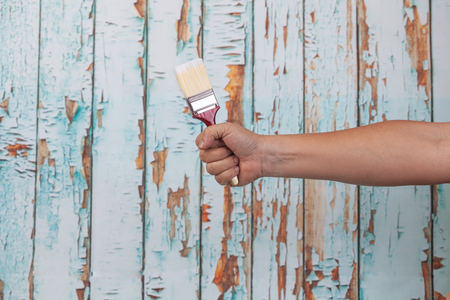Understanding Your Fence’s Material
Before you grab a brush or a can of stain, it’s crucial to consider what your fence is actually made of. In American neighborhoods, the most common fence materials are wood, vinyl, and metal—each bringing its own character and care requirements. Wooden fences, like classic cedar or pine pickets, offer warmth and charm but demand regular attention due to their natural tendency to weather, warp, or rot. Staining or sealing wood helps preserve its beauty and extends its lifespan. Vinyl fences, on the other hand, are celebrated for their low maintenance and resistance to the elements. While they rarely need painting or staining, choosing the right cleaning products can keep them looking crisp and new. Metal fences, such as wrought iron or aluminum, create a sleek visual statement but may face issues like rust or chipping paint over time. Applying specialized paints or sealants can protect metal surfaces from corrosion and maintain their bold appearance. By understanding the unique properties of your fence material, you set the stage for smarter finishing choices—ensuring both durability and curb appeal that suits your home’s style.
Choosing Between Stain, Paint, or Sealant
When it comes to elevating your fence for both durability and curb appeal, the finish you choose—stain, paint, or sealant—plays a starring role. Each option brings a unique set of benefits, drawbacks, and style impacts that can dramatically change the overall vibe of your outdoor space. To help you decide which is best for your fence and home, lets break down the pros, cons, and aesthetic fit of each finish in a handy comparison table:
| Finish Type | Pros | Cons | Distinctive Look | Best For |
|---|---|---|---|---|
| Stain | – Enhances natural wood grain – Penetrates deeply for long-lasting protection – Easier touch-ups – Resists peeling and cracking |
– Limited color options compared to paint – Needs reapplication every 2–4 years (depending on climate) |
Warm, organic appearance with visible wood texture; semi-transparent stains highlight wood character. | Modern farmhouse, craftsman, or mid-century modern homes seeking a natural vibe. |
| Paint | – Offers endless color choices – Provides strong UV protection – Can create a bold statement – Smooth, uniform coverage |
– Prone to peeling and chipping over time – Touch-ups can be more noticeable – May hide wood grain completely |
Sleek and contemporary; can make fences pop or blend seamlessly with the home’s palette. | Minimalist, traditional American, or coastal homes looking for either contrast or harmony with house colors. |
| Sealant | – Preserves raw wood look – Guards against moisture and mildew – Easy application and maintenance |
– Minimal UV protection (wood may gray) – No added color; purely functional – Requires frequent reapplication (every 1–2 years) |
Naturalistic and understated; keeps wood looking as-is while protecting from the elements. | Rustic cabins, eco-modern homes, or properties aiming for an unrefined outdoor aesthetic. |
The Right Finish for Your Home’s Style
If your American home features clean lines and crisp siding—think modern or contemporary architecture—a painted fence in bold black or cool white offers dramatic contrast that feels intentional and stylish. Stains are perfect for showcasing cedar or redwood fences in craftsman bungalows or ranch-style homes, where earthy authenticity shines. Meanwhile, sealants support a laid-back “California casual” look by preserving the fence’s raw beauty—ideal for blending seamlessly into lush landscapes. Whatever your home’s style DNA, choosing the right finish ensures your fence not only lasts longer but also enhances your property’s visual story.

3. Prepping Your Fence for Success
Before you even crack open a can of stain, paint, or sealer, the real magic happens in the prep work. Think of it as setting the stage for both durability and curb appeal—two things every American homeowner can appreciate. A well-prepped fence not only stands up to sun, wind, and rain but also elevates your outdoor aesthetic from ordinary to enviable.
Cleaning: The Foundation of Flawless Results
Start by giving your fence a thorough cleaning. Remove dirt, mildew, and old residues using a pressure washer or a stiff brush with soapy water. Don’t skip this step—painting or staining over grime locks in problems that will eventually show through your finish, causing peeling or discoloration down the line.
Sanding: Smoothing Out Imperfections
Once dry, check for rough patches, splinters, or peeling old finishes. Use medium-grit sandpaper or an orbital sander to smooth out the surface. This not only helps your new coating adhere better but also ensures a tactile, splinter-free experience—perfect for backyard BBQs and family gatherings where guests might lean against your fence.
Repairing: Reinforce Before You Refresh
Inspect your fence for loose boards, popped nails, or rotting wood. Replace damaged sections and secure any wobbly pieces before you move forward. Taking care of these repairs now prevents bigger headaches later and guarantees that your investment in staining or painting pays off with years of structural integrity and beauty.
By investing time in cleaning, sanding, and repairing, you’re laying the groundwork for a finish that lasts and looks stunning—true hallmarks of both good design and practical American homeownership.
4. Application Techniques for a Flawless Finish
If you want your fence to not only last but truly enhance your curb appeal, nailing the application process is key. A flawless finish depends on choosing the right tools, knowing when to paint or stain, and applying your product with both precision and style. Here’s how to get pro-level results that stand up to the American elements—and look good doing it.
Choosing the Right Tools: Brushes vs. Sprayers
| Tool | Best For | Pros | Cons |
|---|---|---|---|
| Brush | Detail work, touch-ups, small fences, intricate designs | Great control, reaches into grooves, less overspray | Slower application, can leave brush marks if rushed |
| Sprayer | Large surfaces, new installations, smooth contemporary looks | Fast coverage, ultra-smooth finish, even coats | Requires prep/masking, learning curve, may waste product on windy days |
Timing Is Everything: Weather Considerations
When it comes to outdoor projects in the U.S., weather matters. Aim for dry conditions with temps between 50°F and 85°F—avoid rain for at least 24 hours post-application. Humidity slows drying time and can cause uneven finishes or bubbling. Early morning or late afternoon is best to dodge direct sun that dries coatings too quickly.
Step-by-Step: Achieving an Even Coat
- Prep like a Pro: Clean and sand your fence until smooth. Remove all dirt and loose material—think of this as prepping your canvas for art.
- Prime (if painting): Apply a high-quality exterior wood primer for lasting color vibrancy and better adhesion.
- Apply in Sections: Work in manageable sections (one or two boards wide), whether using a brush or sprayer. This helps maintain a wet edge and prevents lap marks.
- Lapping Strategy: Overlap each stroke slightly for full coverage—especially important when working with stains or sealers to avoid streaks.
- Go with the Grain: Always follow the wood grain for a natural look that highlights texture and design details.
- Multiple Thin Coats: Two thin coats are better than one thick coat; this allows better penetration and durability.
- Smooth Finishing Touches: Check from different angles for drips or missed spots while still wet; touch up as needed for a uniform sheen.
Design-Forward Tips: Elevate Your Fence’s Look
- Ombre Staining: Try blending two complementary stain shades for a modern gradient effect along your fence line.
- Tape & Block Patterns: Use painter’s tape to create stripes or geometric shapes—perfect for adding personality to suburban or urban backyards.
- Naturally Inspired Palettes: Choose colors that echo local landscapes—think Pacific Northwest forest greens or Southwest adobe reds—to ground your fence in its environment.
Your Next Steps Matter
A thoughtful approach to application does more than protect wood—it transforms your fence into a design feature that weathers beautifully over time. With the right tools, timing, and techniques, you’ll achieve results that are both durable and distinctly yours.
5. Curb Appeal: Style Tips to Elevate Your Fence
When it comes to boosting your home’s curb appeal, your fence is an essential design element that can make a lasting first impression. In American neighborhoods, fences are more than boundaries—they’re a statement of style and pride. To ensure your fence stands out for the right reasons, consider these trending approaches that blend longevity with visual impact.
Color Trends That Turn Heads
Earthy neutrals like deep charcoal, rich walnut brown, and classic white never go out of style in the U.S., harmonizing beautifully with most home exteriors. For a modern twist, navy blue and sage green are on the rise—subtle yet sophisticated, they add personality without overwhelming the landscape. If you’re feeling bold, black stains or paints offer a sleek, contemporary vibe that contrasts lush greenery and brightens architectural details.
Finishes That Last and Impress
Matte finishes are popular for their understated elegance and ability to mask minor imperfections, while semi-gloss options bring a touch of polish and are easier to clean—perfect for families or high-traffic areas. Natural wood stains remain a favorite, allowing the grain to show through while offering essential UV protection. Consider sealing with products that provide both waterproofing and mildew resistance for enduring beauty.
Design Accents for Extra Flair
Accent elements like decorative post caps, lattice tops, or horizontal slats can transform a basic fence into a standout feature. In many American suburbs, homeowners integrate lighting—solar post lights or string lights—for evening ambiance and safety. Mixing materials is also trending: combining wood with metal or stone adds depth and custom appeal.
Boosting Home Value Through Thoughtful Design
A well-maintained and stylishly finished fence enhances your property’s perceived value and marketability. Align your choices with your neighborhood’s character but don’t be afraid to express your unique taste. Whether you opt for timeless hues or trend-forward accents, investing in thoughtful stain, paint, or sealant application ensures your fence will be admired for years to come.
6. Maintenance Strategies for Long-Term Beauty
Once you’ve put in the work to stain, paint, or seal your fence, the next step is ensuring it continues to look great and function well for years. Consistent maintenance doesn’t just preserve the style—it also safeguards your investment. Here’s how a few simple strategies can make all the difference.
Regular Touch-Ups: Catch Problems Early
No finish lasts forever, especially when your fence faces the harsh American seasons—scorching summers, frigid winters, and sudden rainstorms. Inspect your fence at least twice a year. Look for peeling paint, faded stain, or worn sealer, especially on south-facing panels. Addressing these issues early with quick touch-ups prevents moisture from sneaking in and wood from warping or splitting. A small can of matching stain or paint kept handy can save you bigger repairs down the line.
Cleaning Schedules: Keep It Fresh
Dirt, mildew, pollen, and even barbecue smoke can dull your fence’s finish over time. Create a cleaning schedule that fits your climate and yard use—most homeowners benefit from a spring and fall washdown. Use a soft brush and a mild, eco-friendly soap solution to gently remove grime without stripping away protective layers. Avoid harsh chemicals or power washing, which can damage both wood grain and finishes. Clean fences reflect pride in ownership and boost curb appeal season after season.
Eco-Friendly Products: Protect Your Fence—and the Planet
Today’s environmentally conscious products offer powerful protection without compromising sustainability. Look for water-based stains and low-VOC paints or sealers—they’re safer for pets, kids, and local wildlife while still guarding against UV rays and moisture. Using these products during touch-ups or reapplications ensures your fence ages gracefully while minimizing environmental impact—a win-win for your home and community.
Pro Tip: Set Reminders
Life gets busy! Put annual fence inspections and cleaning dates on your calendar or set phone reminders so maintenance never slips through the cracks. Consistency is key to keeping that freshly finished look year after year.
Conclusion: Your Fence as a Lasting Statement
With thoughtful upkeep—regular touch-ups, smart cleaning habits, and eco-friendly products—your stained, painted, or sealed fence will stay strong and stylish far longer than you might expect. A well-maintained fence isn’t just about longevity; it’s about creating an inviting outdoor space that reflects your taste and enhances your home’s value for years to come.


